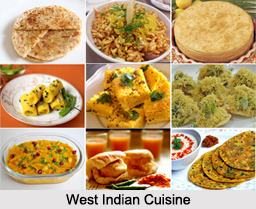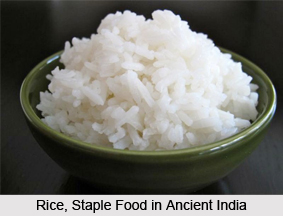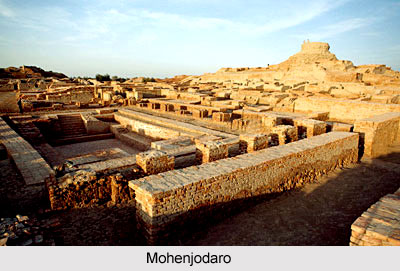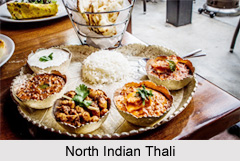Food and drinks has always played an important part in Indian custom, ritual, tradition and mores. Right from the remote past food and drinks somewhat regulated the social life of the Indians. Very less can be known about the food habits of the early Indians. The Hindi poets have penned down the food habits of the 16th century India.
The writers of digests of Hindu Law like Hemadri and Raghunandana flourished from the 13th to the 16th century A.D. They had tried to regulate the life of an average Hindu by laying down rigid rules for every occasion. This left hardly any scope for independent thinking on the part of the people and led to a stage of stagnation in Hindu society. The reformers of the 15th century like Kabir, Chaitanya and Nanak raised their voice against the orthodoxy of both the Hindu Pandits and the Muslim Maulavis and preached the gospel of love and friendship in the languages of the people as well.
As a result of the work of these reformers there was a movement aiming at the synthesis of the old and new elements in Indian social life. In this paper an attempt is being made to examine these elements in the sphere of food habits of Indians during the 16th century. The paper is based on a study of the works of seven Hindi poets. Among them four were Bhakti poets, namely, Mira (1502-56), Surdas (1478-1580), Tulsidas (1497-1623) and Nandadas (1543-1605). These poets generally described the use of traditional foods among the people. The other three were Sufi poets in the list. The names can be mentioned as Kutuban (1503), Manjhan (1545) and Jayasi (1527-40) representing the synthetic outlook in food habits. Of all the seven Hindi poets the most comprehensive description of food habits of the people is found in Jayasi`s Padmavat.
The poets of Bhakti school refer to four kinds of food preparations and these are Bhaksya, bhojya, chosya and lehya. These means hard food, soft food, preparations that are sucked and food preparations, which could be licked. Six rastes or satrasa, fifty-six kinds of preparations i.e. chhappan bhoga and thirty-six kinds of condiments i.e. Chhattisoh vyanjan are present. The Kutuban also refers to six tastes and five tasty preparations or khatrasa and pancha ambrita. Kutuban andjayasi refer to 52 kinds of cakes or puris and 84 kinds of cooked preparations or handis while JayasIi refers to 101 kinds of kathahandis.
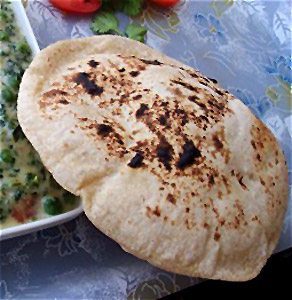 Of the cereals the Bhakti poets mention mainly wheat or kanaka and a number of its preparations. The flour of parched grains or sattu was mixed with water and sugar and then can be eaten. All kinds of cakes were prepared with wheat flour or roti, bati, port. A cake prepared with a mixture of the flours of gram and wheat or pea was called makuni. The cakes prepared with a mixture of more than one grain were called misri. Mandes were cakes prepared by mixing milk and clarified butter in wheat flour and parching them in pans of clay.
Of the cereals the Bhakti poets mention mainly wheat or kanaka and a number of its preparations. The flour of parched grains or sattu was mixed with water and sugar and then can be eaten. All kinds of cakes were prepared with wheat flour or roti, bati, port. A cake prepared with a mixture of the flours of gram and wheat or pea was called makuni. The cakes prepared with a mixture of more than one grain were called misri. Mandes were cakes prepared by mixing milk and clarified butter in wheat flour and parching them in pans of clay.
The common word for fried preparations of cereals seems to be palavan. Frying cakes of wheat flour in clarified butter prepared puris. Puris stuffed with the ground pulse of Urad were called kachauris.Very delicious cakes prepared with wheat flour were called luchais. Thick cakes mixed with salt and fried in clarified butter were called matharis. Suhalis or Soharis were probably cakes prepared with powdered wheat flour and fried in clarified butter.
The common words used for rice were tandua or chatir. Unhusked rice was called dhan. The Surdas has mentioned three varieties of rice and these are rayabhoga, pasai, and nilavati. Tulsi also mentions pasai but calls it pasarf. Jayasi gives the names of twenty-eight varieties of rice of superior kind.
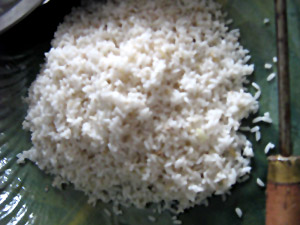 Boiled rice i.e. bhat or odana was taken either with pulses or kadhi. The most popular and relished preparations of rice were khir or payasa. It was prepared by cooking rice in milk and adding sugar to it. Sometimes cow`s milk was also used for this purpose. Jayasi calls it thick khirjauri. Boiled rice was eaten with curds i.e. dadhi-odana with great relish. Probably balls of rice flour or kurabari were also prepared. Jayasi mentioned another preparation of rice and this is called jhalar. It was prepared by boiling rice and frying the thick gruel after the rice grains had been taken out from it.
Boiled rice i.e. bhat or odana was taken either with pulses or kadhi. The most popular and relished preparations of rice were khir or payasa. It was prepared by cooking rice in milk and adding sugar to it. Sometimes cow`s milk was also used for this purpose. Jayasi calls it thick khirjauri. Boiled rice was eaten with curds i.e. dadhi-odana with great relish. Probably balls of rice flour or kurabari were also prepared. Jayasi mentioned another preparation of rice and this is called jhalar. It was prepared by boiling rice and frying the thick gruel after the rice grains had been taken out from it.
The most common rice preparation was khichadi, which was a mixture of rice and mung pulse. Tahari was prepared by cooking rice with bails and green pea. Sometimes the kernel of coconut, dates and chiraunji were also used in preparing tahari. Common man ate parched rice. Another popular preparation of rice was chivda. It was prepared by soaking rice grains in water and then thrashing them with a paste before they were parched or baked.
Of other cereals, the Bhakti poets have mentioned bajra. But there is no mention of maize in their works. The poets of Bhakti school have mentioned almost all the pulses namely, moong, masur, urad and gram. Gram was usually consumed by parching and eating.Grains of green gram or pea were ground mixed with salt, turmeric and other spices and then fried to make a delicious preparation called nimona.
The flour of gram pulse was used for preparing cakes by mixing rock salt i.e. sendha, and ajvain with it. Sometimes flour of pulse of gram or besari was mixed with powdered wheat flour for preparing cakes. Besan was also used to cover certain leaves such as those of aravi and then frying them in clarified butter or rilcavacnn. The general word for all preparations of ground pulses was pithauri. Various kinds of small and big balls were prepared by allowing the pulses to get soft by soaking them in water and then grinding them on a piece of stone.
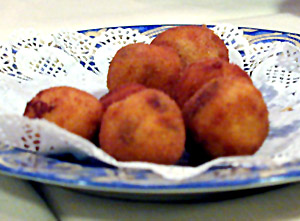 The fried balls prepared with moong pulse were called philauri, or moong pakaura or dharahari. Balls made with urad pulse were eaten either simply by frying or by soaking them in a solution of gur, and water, gurbara or in a liquid preparation of tamarind. Jayasi also mentions two kinds of badas, one in which ginger and pepper were added and the other in which milk and sugar were added. Dabhkauri were balls of urad pulse, which were put in kadhi without frying. Thin cakes or papads were prepared with the flour of urad pulse by mixing a number of spices in it. Saline preparations were called Wiare.
The fried balls prepared with moong pulse were called philauri, or moong pakaura or dharahari. Balls made with urad pulse were eaten either simply by frying or by soaking them in a solution of gur, and water, gurbara or in a liquid preparation of tamarind. Jayasi also mentions two kinds of badas, one in which ginger and pepper were added and the other in which milk and sugar were added. Dabhkauri were balls of urad pulse, which were put in kadhi without frying. Thin cakes or papads were prepared with the flour of urad pulse by mixing a number of spices in it. Saline preparations were called Wiare.
Dairy Products
Some favorite food item especially dairy products of that period can be mentioned as Milk, curds, and butter. Milk of a cow, which had recently given birth to a calf, was also used. The people liked milk that was reduced to half the quantity by boiling. Butter was taken with cakes and crystal sugar or misri. Curds were generally taken with boiled-rice. Inspissated milk or khoya was used in preparing sweets. Clarified butter was used in frying articles of food. Villagers used buttermilk or chhachh in large quantities. Cream or sara of milk was relished by people. Basaundii or rubadi is a fragrant and semi liquid preparation of milk that was very much liked. Raita was prepared by adding some water to curds with pieces of some vegetables and fragrant spices to it. A mixture of milk, curds, clarified butter, honey and sugar was called panchamrt. Sikharan was a sweet preparation with curds, which was very much relished by people in northern India.
Sweets
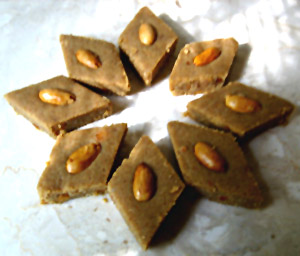 Honey was extensively used in this period. A variety of sugarcane that was sown in winter was called kharik. Guda was widely used and raw sugar was called khand. Sugar was called sarkara. Crystal sugar or misri was generally taken with butter. Sometimes sugar cakes called gindauri were also eaten. Batases were prepared with sugar.
The reference of Khir has already been given and this was a very ancient preparation. Pitha was another very ancient sweet preparation. Sweet balls i.e. laddus or modaka, jalebi and peda seem to be common sweets during this period. Khir-ladu seems to be some special kinds of sweet balls in which cloves were also used. Motiladdus were prepared with small balls of besan. Sugar coated threads of fried wheat flour seb and fried wheat flour mixed with sugar karnsar were also common sweet preparations. Barfi which were pieces of inspissated milked mixed with sugar was eaten with great relish. Andarases were prepared with ground rice. Pieces of a cake of pulse flour fried in clarified butter and coated with sugar were called khandaras. Cakes of powdered wheat flour coated with sugar were called khajua or khaja. Khajiir`s were prepared with milk or wheat flour.
Honey was extensively used in this period. A variety of sugarcane that was sown in winter was called kharik. Guda was widely used and raw sugar was called khand. Sugar was called sarkara. Crystal sugar or misri was generally taken with butter. Sometimes sugar cakes called gindauri were also eaten. Batases were prepared with sugar.
The reference of Khir has already been given and this was a very ancient preparation. Pitha was another very ancient sweet preparation. Sweet balls i.e. laddus or modaka, jalebi and peda seem to be common sweets during this period. Khir-ladu seems to be some special kinds of sweet balls in which cloves were also used. Motiladdus were prepared with small balls of besan. Sugar coated threads of fried wheat flour seb and fried wheat flour mixed with sugar karnsar were also common sweet preparations. Barfi which were pieces of inspissated milked mixed with sugar was eaten with great relish. Andarases were prepared with ground rice. Pieces of a cake of pulse flour fried in clarified butter and coated with sugar were called khandaras. Cakes of powdered wheat flour coated with sugar were called khajua or khaja. Khajiir`s were prepared with milk or wheat flour.
Gievar was prepared with powdered wheat flour and sugar. Khandu seems to be another sweet preparation. Khua seems to be a sweet preparation of khoya. Surdas mentions sweet preparations called galamasurft and Jcaurf. Petha was also used in preparing sweets. Gum was mixed with a solution of sugar, which was eaten after drying gunjhiya, or gujha was also a common sweet preparation, which was prepared with powdered wheat flour and sugar and was semicircular in shape. Jayasi probably calls gunjhiya as pera. Another sweet mentioned by Surdas is khwrma. Lapsi was a sweet preparation of fried wheat flour and sugar, which was licked, Pheni and suhari were other sweet preparations of wheat flour. Khoya was used in many sweet preparations.
Jayasi also mentions sweets like khirisa, murkuri, chhal, dhurhari and haiuva. Khirisas were a kind of gunjhiyas. Murkura is probably the same as amirati, Bund seems to be bundi of besan and dhurahari are sweets balls of bundi.
Sweets that were served at the end of a dinner were called pachhiyauri.
Vegetables
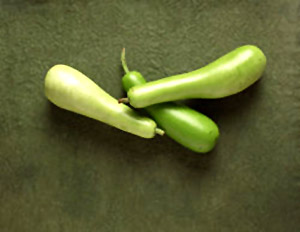 The common fruits that were cooked as vegetables were torai, chachehda, bottlegourd, kachari, kundaru, Jcaicoda, Jcareia, brinjal, paraval, katahal, bhindi, tinda and pumpkin gourd. Bottle gourd seems to have been the vegetable most used by poor people in Rajasthan. Jayasi also mentions a hilly variety of bottle gourd. Kachari`s were cult into pieces and dried. After sometime they were fried and salt and spices added to make them tasty. Pumpkin gourd was used to make balls by mixing its pulp with ground urad pulse or kumhadauri.
The common fruits that were cooked as vegetables were torai, chachehda, bottlegourd, kachari, kundaru, Jcaicoda, Jcareia, brinjal, paraval, katahal, bhindi, tinda and pumpkin gourd. Bottle gourd seems to have been the vegetable most used by poor people in Rajasthan. Jayasi also mentions a hilly variety of bottle gourd. Kachari`s were cult into pieces and dried. After sometime they were fried and salt and spices added to make them tasty. Pumpkin gourd was used to make balls by mixing its pulp with ground urad pulse or kumhadauri.
The leaves that were generally cooked as vegetables were Jcuifa, leaves of gram plant, chaulai, ladia, poi, leaves of radish, soya, bat Jiua, metjn, Jonia, chujca and leaves of mustard.
The flower that was used as vegetables can be named as Jcachnar. The roots used as vegetables were pindika, pindaru, ratalu, suran, ibb and aravf.
Mushrooms like chhatraka were also cooked as vegetables. The juice of vegetables was called sasan.
The common fruits were mangoes, plums, grapes, dates, cucumber and Icifra. Jayasi mentions a variety of khira called balam, banana, coconut, sugarcane and Iciirni.
Surdas also mentions sriphal, guavas, saphari, and Jchubani, jamou, apples or seb, watermelon or tarbuza, pomegranuts or dadima, biiva. There were a number of gardens. Manjhan mentions turanja variety of lemons and Jayasi mentions jambhere, oranges and badahal.
The common dry fruits were raisins, kismisa, almond or badam, dates or chhuhara, Miaur, pistachio or pista, chirauiy and coconut.
Spices
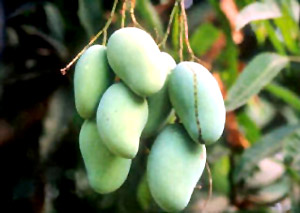 The common spices mentioned by these poets besides rock salt are turmeric, cloves, cardamon, and lemon. Tulsidas mentions a variety of lemon called Karana, asafoetida, pepper, pipai, Alavayan, dried green mango or khatsi. Tamarind fruit or chichini was also used for making the articles taste sour. Saffron, kasturi, cardemom or Ilaichi oveta ginger, Dry ginger or saurith was also used for seasoning food articles. Myrobalan and Amla was also used.
The common spices mentioned by these poets besides rock salt are turmeric, cloves, cardamon, and lemon. Tulsidas mentions a variety of lemon called Karana, asafoetida, pepper, pipai, Alavayan, dried green mango or khatsi. Tamarind fruit or chichini was also used for making the articles taste sour. Saffron, kasturi, cardemom or Ilaichi oveta ginger, Dry ginger or saurith was also used for seasoning food articles. Myrobalan and Amla was also used.
Fenugreek or methi was used for preparing pulse balls for cooking. This is popularly known as mithauri. Harra was also used for seasoning food preparations. Pickles or achar or sandhan were prepared with lemons, suran, mangoes, karondas and fruit of Jcarir tree or Teme.
Guramba was a preparation of green mango pieces cooked in a solution of jaggery and water.
Condiments
Kanji was prepared by allowing the rice gruel to fement. Some fruits and vegetables were preserved in vinegar.
Oils and oilseeds
Besides clarified butter oils of sesame or mitha tel and mustard or Icadava tel were commonly used for frying articles. Fish were generally fried in mustard oil. Sesame or til was a common article of food.
Beverages
This is described as the common sweet drink where water is mixed with raw sugar or Ichandvanl. Sometime fragrant substances such as camphor or saffron, and sandalwood were added to make it more palatable. In spring the lovers enjoyed fruit juices such as those of grapes and pomegranates.
Intoxicating Drinks
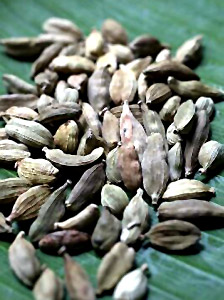 Drinking liquor or sura was generally condemned but a number of other varieties of intoxicating drinks are mentioned as madhu, madhvi, madira, ira, varuni, asava, maya, Jcadambari, maireya, Prasanna, Hala, sidhu and mada. All these varieties were prepared in ancient times. The only new word used is hala. Drinking liquor was particularly condemned for Brahmanas.
Drinking liquor or sura was generally condemned but a number of other varieties of intoxicating drinks are mentioned as madhu, madhvi, madira, ira, varuni, asava, maya, Jcadambari, maireya, Prasanna, Hala, sidhu and mada. All these varieties were prepared in ancient times. The only new word used is hala. Drinking liquor was particularly condemned for Brahmanas.
Betel Chewing
Betel i.e.tamor and tambul chewing had become very popular during our period. Betel leaves were taken with areca nut, lime, and kattha, cloves, cardamon, camphor, and Icasturi. In royal families betel leaves were served in gold plates after a feast. The leaves were generally folded to make Bidas and these bidas were kept in small cases made of straw.
Betel leaves were also used in making a saline preparation called panaura by covering the leaves with a paste of flour of gram pulse.
